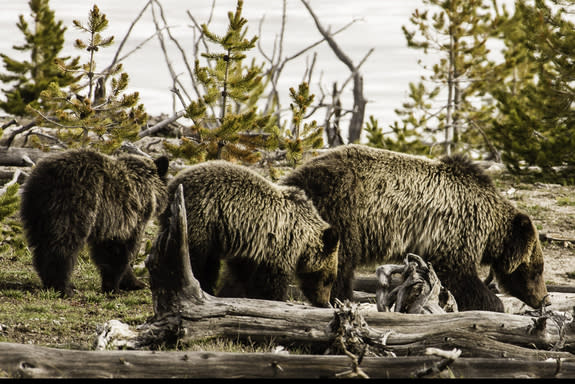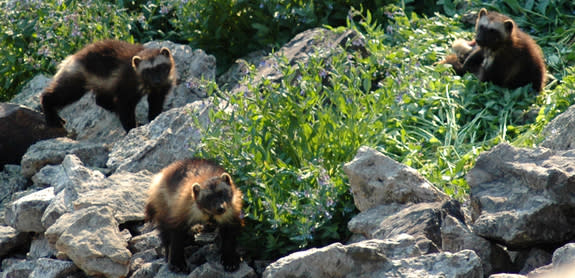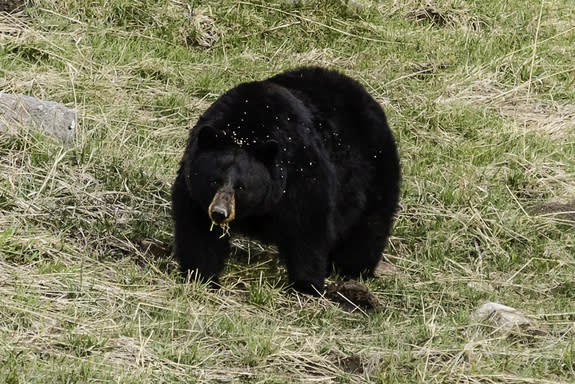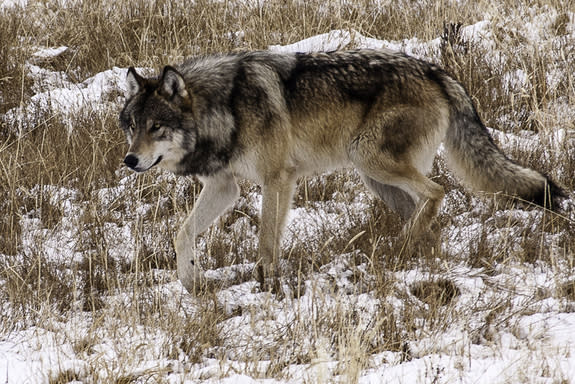Should We Hunt Yellowstone Grizzly Bears? (Op-Ed)
Jon Beckmann is a conservation scientist for the Wildlife Conservation Society (WCS) North America Program. He contributed this article to Live Science's Expert Voices: Op-Ed & Insights.
In the 2015 film "The Revenant," one of the most dramatic scenes pits frontiersman Hugh Glass in a harrowing effort to ward off an attacking grizzly bear — a battle that helped Leonardo DiCaprio win the Oscar for Best Actor. The film, set in the Northern Rockies of the American West two centuries ago, harkens back to a time when grizzlies numbered close to 100,000 in the mountains and plains of the western United States — and when the hunting of grizzlies began to accelerate.
It was precisely such removals, driven by fear of attacks on livestock and people, coupled with the destruction of grizzly habitat, that led to the decimation of this iconic animal over the next century. By the early 1970s, the bears' numbers had plummeted to roughly 1,000 animals in the continental U.S., where they occupied just 2 percent of their former range.
Predators as prey?
Of the five or six small grizzly populations in the United States in 1975, the one in and around Yellowstone National Park was the smallest, with approximately 136 bears.
In response, the U.S. Fish and Wildlife Service (USFWS) set out to protect the grizzly by listing it under the Endangered Species Act (ESA). In the subsequent four decades, grizzly bears have made population comebacks in the Yellowstone area, so the agency recently announced its intention to de-list the animals in that region. The proposal has sparked a debate over whether it may be time for grizzles to be hunted again. [Photo Confirms First Grizzly Bear Spotting in 15 Years ]
For me, that debate is a familiar one. In my career as an ecologist, I have sought to ensure that carnivore species like bears, jaguars and mountain lions can maintain viable populations in the American West — a region that continues to be heavily influenced by human activity. Striking a balance between the needs of people and those of these large, wide-ranging — and, at times, dangerous — animals can be challenging.
Addressing the hunting question requires knowing whether grizzlies are sufficiently numerous to fulfill their ecological role in the region. Their impact on prey species — and their roles in foraging, scavenging and seed dispersing — are part of a complex set of interactions. Removing bears too quickly would alter the local ecosystem. At the same time, we must consider these carnivores' potential threat to ranchers' livestock and livelihoods.
There must be a willingness to consider differing viewpoints during these decision-making processes. All sides of the debate must be willing to compromise, and all dogmatic views — e.g., all carnivore populations should be hunted; no carnivore population should ever be hunted — must be checked at the door.
The bear hunts — lessons learned
The debate about the status of grizzly bears in the Northern Rockies closely resembles another disagreement over black bears in Nevada. The state approved its first-ever bear hunt in 2011 in response to two decades of data I had collected with colleagues from the Nevada Department of Wildlife documenting how bear numbers had increased due to conservation efforts.
Key factors in that success were restoration of bear habitat and the increased use of "bear-proof" garbage cans and dumpsters, which help to reduce the number of interactions between people and bears looking for food. Fewer conflicts with people lowered bears' mortality rates.
Today, thanks to a science-based decision-making process, Nevada stakeholders — from hunters and ranchers to the larger agricultural community and environmentalists — determine together how to manage and live with this species. The recovery success of bears in Nevada could inform efforts with grizzlies and wolves in places like Idaho, Wyoming and Montana.
Hunting bans are not the answer
A complete hunting ban on previously protected grizzly bears (or any large carnivore, for that matter) disenfranchises hunters, who have contributed much to conservation over the past century. A more useful approach is to find a consensus on how many of these bears we ought to sustain — and where — based on rigorous, peer-reviewed science.
Upon de-listing grizzlies, decision makers must be sure the bears have recovered both in absolute numbers and in terms of the connectedness of regional populations before the animals are hunted. Bears in Yellowstone must be linked to bears in southwest Montana and central Idaho as one "metapopulation" in order to maintain genetic diversity and other important dynamics. Doing so requires establishing bear populations in central Idaho and southwest Montana. [Photos of Grizzlies & Black Bears Crossing the Highway ]
However, this cannot happen successfully if conservationists do not acknowledge that the USFWS-prescribed recovery criteria for de-listing this species under the Endangered Species Act have now been met.
For grizzly bears, management in the near future will revert to state authority. As the bears continue to meet the de-listing criteria, hunting can, and should, be part of the equation once connectivity among populations is established.
Communities will need to explore how to live with big predators to reduce conflicts through co-existence efforts rather than debating simply whether to hunt them. State governments working with local communities will also need to decide which areas in a given landscape should not contain grizzlies — a determination that has been poorly made in the past, if at all.
A sustained recovery of grizzlies requires adequate funding for state and federal agencies. If managed properly, these magnificent animals can avoid sliding back onto the endangered species list. And as grizzly bears continue to thrive, their story, and our story, can be less of a device for Hollywood storytelling and more of a model for how to recover large carnivores across the globe.
Follow all of the Expert Voices issues and debates — and become part of the discussion — on Facebook, Twitter and Google+. The views expressed are those of the author and do not necessarily reflect the views of the publisher. This version of the article was originally published on Live Science.
Grizzlies Should Stay on Endangered Species List, Scientists Say
Will Grizzly-Polar Bear Hybrid Wake People Up to Changing Climate? (Op-Ed)
Copyright 2016 LiveScience, a Purch company. All rights reserved. This material may not be published, broadcast, rewritten or redistributed.





